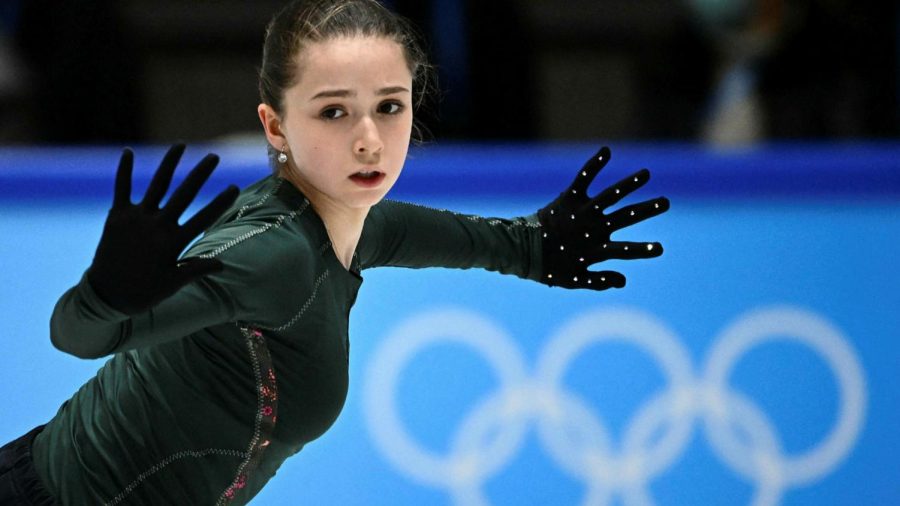The Russian Doping Scandal
The history and current doping scandals of Russian athletes for the Olympics
Before we discuss the controversy involving Kamila Valeryevna Valieva of Russia, it is important to understand the long history of illegal doping in Russian Olympic history. Russia has had 46 Olympic medals taken away from them for systematic doping over the years. This is four times the next highest amount of medals taken away, and overall, more than 150 Russian athletes have been caught illegally doping in the Olympics.
Now these numbers clearly set Russia apart from all other countries in terms of numbers. Additionally, and arguably more importantly, the drugs used in all of these dopings have been supplied by the Russian state. This is very different from any other country. Individual dishonesty is one thing, but government dishonesty is another.
We will begin our story in Moscow in 1980 where the Summer Olympic games were held. Although nobody was caught illegally doping at this time, a KGB colonel stated that the agency’s officers were posing as drug officials for the International Olympic Committee to undermine drug tests. At this time, artificial testosterone and other drugs had not been researched enough to be outlawed in the Olympics but further tests showed that 20% of Russian athletes at the games had illegal amounts of testosterone in their bodies (including 16 gold medalists). Although these tests were unofficial as they were new, the same tests are now used as the basis to testing in today’s games. It is also important to note that these Olympics had the first documented case of “blood doping”, in which the number of red blood cells in the bloodstream is boosted in order to enhance athletic performance. Even the Australian Senate said that these games could not be called anything other than the “Chemists’ Games”.
Now we come to 2008, where Russia begins its doping scandal that resulted in its ban today. In 2008, seven Russian track and field athletes were suspended ahead of the Beijing Games for manipulating their urine samples. Multiple Russian biathletes were also banned from the upcoming 2010 games for doping as well and further investigation occured for thousands of athletes. In October 2009, the International Association of Athletics Federations general secretary Pierre Weiss wrote to Valentin Balakhnichev that blood samples from Russian athletes “recorded some of the highest values ever seen since the IAAF started testing” and that these tests “strongly suggest a systematic abuse of blood doping and EPO-related products.”
In 2010, Vitaly Stepanov, an executive at the Russian Anti-Doping Agency started to send information to the World Anti-Doping Agency (WADA) saying that the Russian state was enabling systematic doping in athletes. Stepanov claimed he sent over 200 emails and fifty letters over three years. In December of 2012, an athlete, Darya Pishchalnikova, sent an email to the World Anti-Doping Agency containing precise details of an alleged-state run doping program in Russia. The Agency decided not to open up their own investigation, but rather set the email to Russian sports officials. Then in 2013, Pishchalnikova was banned for ten years by the Russian Athletics Federation after failing a doping test. This move was likely retaliation. Her results from the May 2012 Olympics were nulled and she was on set to lose her Olympic medal. The WADA tried to cover some of these doping cover ups themselves. Later, it was claimed by multiple Russian athletes that Russian officials supplied banned substances to their athletes in exchange for 5% of their earnings. Many Russian athletes were also accused at this time of spending hundreds of thousands of dollars to cover up their drug tests (one such case equated to over $600,000).
After all these controversies, President Vladimir Putin opened the Winter Olympic games in Sochi in 2014. The Russian team surprised many as they amounted to twice as many medals as they won in 2010, and they finished near the top of the medal table. In December of 2014, a German television program reported on allegations of corruption and systematic doping across Russia. After an investigation done by the WADA in November of 2015, the Russian Anti-Doping Laboratory was shut down. The Russian track federation was then banned and that ban remains in place today.
In May of 2016, the former director of the anti-doping laboratory in Moscow said he often switched out dirty samples for clean ones as part of the state doping program in 2014. Lawyers flagged hundreds of covered-up doping cases in dozens of sports for the Russians. The International Olympic Committee then started retesting old samples from the 2008 and 2012 games, banning dozens of athletes from Russia and other countries.
In the 2016 Olympic games in Rio de Janeiro, the Russians competed with a reduced squad after many athletes had been banned. The IOC resisted banning Russia entirely but the Paralympics kicked Russia out. In December of 2017, after evidence of mass Russian cheating at the 2014 Olympic games surfaced, the IOC officially banned Russia from the 2018 Winter Olympics. However, 168 athletes could compete as “Olympic Athletes from Russia.” (Their national anthem cannot be played though). Two of these athletes failed drug tests during the 2018 games.
The WADA reinstated the Russian Anti-doping agency in September of 2018 despite widespread backlash as many felt Russia had not publicly admitted they cheated. The one condition for their reopening was to send the WADA stored data from past games (and they initially missed the deadline to do so). In October of 2018, U.S. prosecutors allege Russian military intelligence officers hacked sports organizations to make it look like other athletes from other countries cheated. In June of 2019, it was alleged that Russians paid over $3.5 million to cover up their failed drug tests. In September of 2019, the WADA said they found signs that Russia tampered with the stored tests they handed over in 2018. Russia and its flag was then banned for four years by the WADA. This ban will be up in December of 2022.
This is why the following scandal is such a big deal. Because more than likely officials knew about this doping of a 15 year old.
Kamila Valeryevna Valieva is a Russian figure skater born on April 26, 2006. Kamila was the first and youngest woman to land a quadruple jump at the Olympics. She helped team Russia win gold in the team skating competition. As well as being predicted to win the single competition for over a year. However, on February 9, it was revealed that a test she took on December 25th was positive for a banned drug named Trimetazidine. The banned drug Trimetazidine is typically prescribed to patients of older age as it is used for heart-related conditions. However, this violation did not become public until after Kamila placed first in the first part of the individual competition. She was immediately suspended from the games. Her lawyers claimed that she had unintentionally ingested the drug claiming it was her grandfather’s medication that must have contaminated water she had consumed. Her attorney won the case swaying three judges at the Court of Arbitration for Sport and therefore, Kamelia was granted to continue on in the competition. However, the rules declare that if an athlete is under the age of 16, they are not held accountable for the drugs. Therefore, her coach Eteri Tuberidze will face the Olympic committee to defend her athlete. The ROC is coming off a 2-year ban after they were discovered doping their athletes in 2020. If found guilty, the ROC will be stripped of their gold medal, the USA, who came in 2nd, will receive the gold medal, and Kamila Valera will be banned from competing in the individual competition.
Many are questioning why Kamila was granted permission to compete after testing positive while other rising athletes have been banned and suspended from the games for similar reasons. American sprinter Sha’Carri Richardson (21) was favored to win a medal in the women’s 100 meters. But, her chances were taken alway after she tested positive for marijuana. Marijuana is not an enhancing performance drug; however, it is a banned substance for athletes and therefore was declined a spot to compete in the 2022 Olympics. Richardson claimed that she had used the drug to cope with the death of her mother as marijuana can be used as a relaxing drug. Ruchardson’s case has called for officials to reconsider marijuana’s status as a banned substance since it is legal in some states and countries around the world.
The main debate that arose from these two athletes is what message does this send to athletes?
Adam Rippon, an American figure skater asked, “What message it sent to allow a young white athlete to compete after testing positive, but not a young black athlete?”
Some may argue that it’s the accountability in the United States compared to that of Russia. As when Richardson tested positive she was forced by U.S officials to skip the Olympics all together. However, in the long run this decision can affect how athletes and coaches view banned drug substances which could lead to another possibly Russia doping like scandal in the future.








